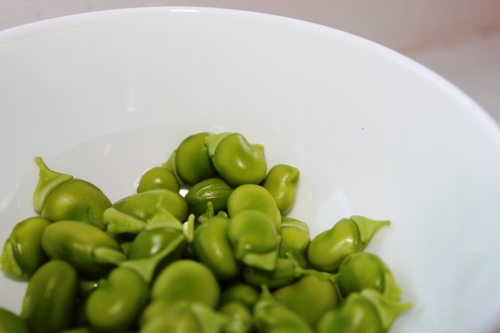
Virgil Evetts
Why did it take me so long to discover broad beans? I’ve spent most of my life with a head full of funny notions about them being horrid, farty things favoured mostly by the old and enfeebled. If I had had the vaguest inkling of the complex loveliness of a tender, young broad bean I would have been growing them and scoffing them for years.
I now rank the flavour of fresh broad beans above even my most beloved asparagus – one of the few vegetables that really make my mouth water. As I mentioned last week though, I rather doubt growing them would have been much of an option to me before I got my beehive. With the extinction of feral bees in the North Island (thank you Varroa mite)and the complete lack of hobby hives in the Devonport area, I would have been relying on the intervention of bumble bees, a notoriously ineffective lot when it comes to beans. But now with my hive in place, the broad bean patch is packed with pods of all sizes, ensuring a supply of beans for some weeks to come. Once they’ve finished fruiting, the plants will be hacked down and dug into the soil where they will release their valuable on-board nitrogen supply- just in time for the tomatoes and peppers to take over.
In some regions broad beans can be maintained over several years as short- lived perennials, but this requires a serious commitment to a rather sprawling crop. In all but the most spacious situations they are better treated as annuals. Broad beans grow very easily from seed and are tolerant of a wide range of soil types. They attract few pests, apart from the odd misguided caterpillar and snail, and are sometime subject to mostly half-hearted mildew attacks in summer.
Although recipes for cooking broad beans – in both dried and fresh forms – are legion, for me the notion of brutalising such a perfect gem with heat is unthinkable. They are best picked young, well before their skins have toughened, and treated like the finest salad green. Serve handfuls of the raw beans loosely scattered on perfect white plates, dressed with the best olive oil, salt flakes, and shaved parmesan. Eye catching, delectable and very grown-up stuff. Young broad beans are an excellent partner to asparagus too. Try them sprinkled over an asparagus risotto, dressed with a little melted butter, a splash of white wine and some crisp pancetta.
Broad beans have earned themselves a permanent place in my vegetable garden schedule, and will feature in every meal I can get away with over the coming weeks. I’m still finding my feet with them though and I’m sure that many of you here have been growing and cooking with broad beans for years. Any tips and recipes would be more than welcome…



No bees, no bees, so in desperation, today I have been out with my little paint brush pretending to be a bee. I figured I had nothing to lose.
I plan to try the idea I saw in a recent episode of River Cottage on Prime – beans on toast (new young broad beans briefly sauteed with some slivers of bacon and spring onions) as soon as broad beans appear in our Farmers’ Market. I love broad beans, and can never understand why people think they have to be peeled!
Thanks Carolyn.
Favism (the condition you’re talking about) is pretty rare and usually diagnosed during childhood. In other words by the time someone is old enough to enjoy broad beans they would hopefully know to avoid them. I should add though, that as with Jerusalem artichokes, not everyone can digest broad beans discretely. Need I say more…
The only tip I have is the wet-blankety remark that people with certain genes can develop haemolytic anaemia from eating raw broad (fava) beans, and also that people on MAOI inhibitors shouldn’t eat them raw either.